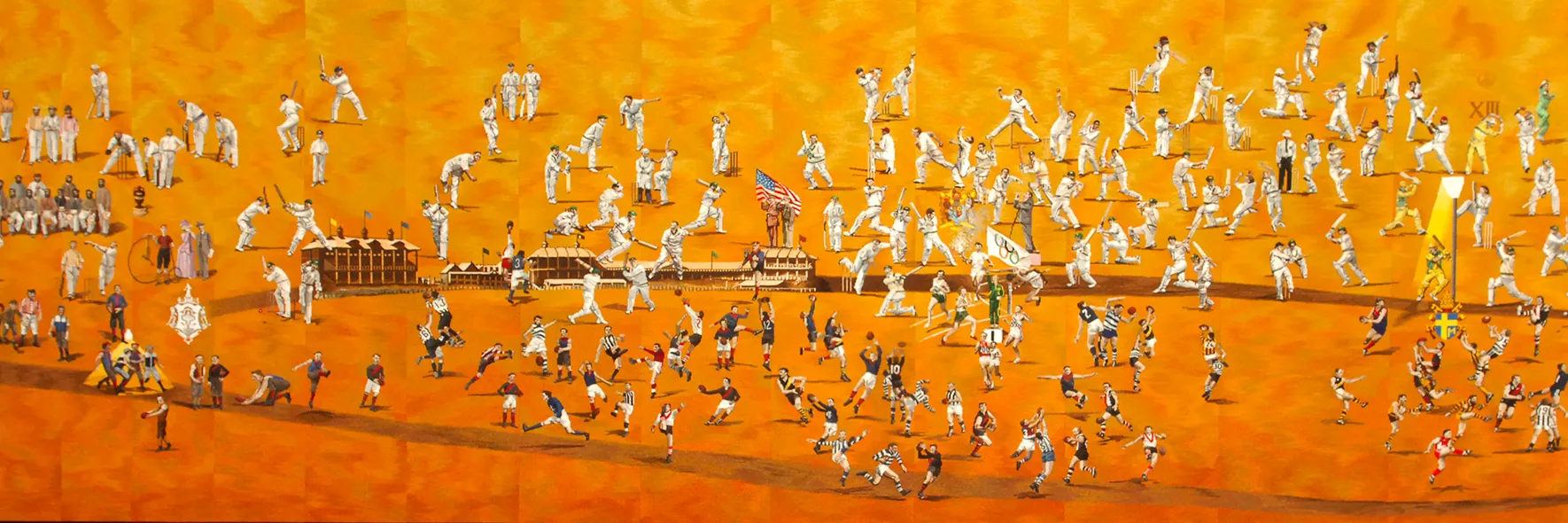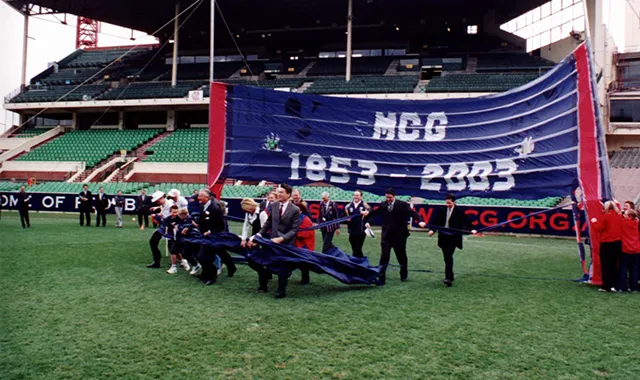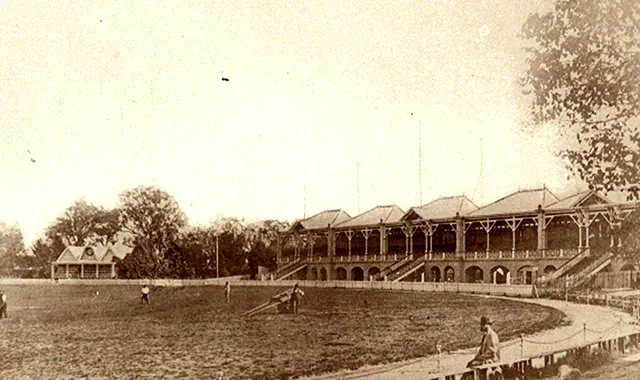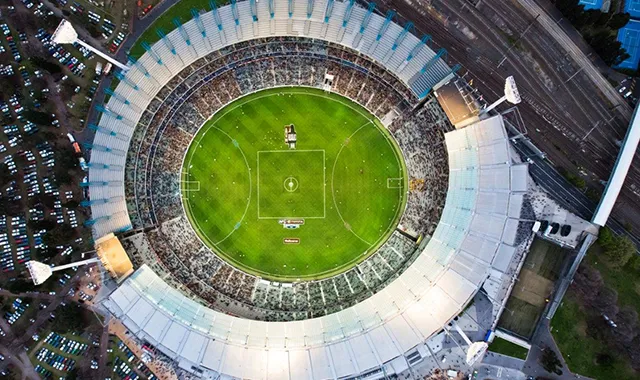The Tapestry was formally unveiled at a black-tie dinner in the Long Room on September 23, 2003.
Best viewed from several metres, its grandeur is stunning. The characters and events depicted are mostly in identifiable pose.
They are placed in chronological order ranging from the MCC’s first president, Frederick Powlett, to champion Australian batsman-keeper Adam Gilchrist and Socceroo Kevin Muscat, who kicked Australia’s only goal in its 1-0 victory over Uruguay in a 2001 World Cup qualifying match.
Included are some of the greats of football and cricket (though doubtless there will be arguments), memorable sporting events such as the 1956 Olympic Games and Austral Wheel Races and other notable occasions like royal and papal tours, Billy Graham’s Crusade and the performance by the Three Tenors.
Throughout modern history, tapestries have been used to record significant events. While William the Conqueror took twenty years to subdue the Saxons as chronicled in the Bayeux Tapestry, the 150 years of contest and achievement depicted in the MCG Tapestry look unlikely to end.
Artist Robert Ingpen, whose remarkable skills are recognised worldwide, painted the figures individually and then painted the broader canvas so that the weavers could position ‘the little guys’ correctly as the tapestry grew on the loom.
This outstanding work of art was one of the Victorian Tapestry Workshop’s most ambitious undertakings, and not just because of its size. The figures are alive, each casting a shadow on the ground, action style familiar, remarkably true to the artist’s renderings.
The MCG Tapestry has brought together two of Victoria’s world famous institutions, the MCG and the Victorian Tapestry Workshop.
Though not as well known as the ’G, the workshop is recognised internationally as the leading centre for tapestry production by no lesser figure than Sir Roy Strong, eminent art historian and former director of the National Gallery London.
The tapestry hangs proudly outside the Long Room, where members and visitors can admire and identify those who have made a significant contribution to what the MCG is today.







